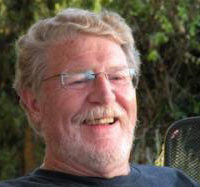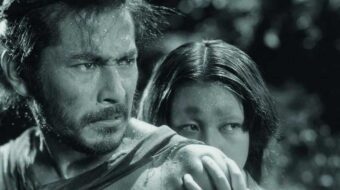
Behind the current impasse among China, Japan and Taiwan over five tiny specks of land in the East China Sea is an influential right-wing movement in Japan that initiated the crisis in the first place, a crisis it is using it to undermine Japan’s post-World War II peace constitution and, possibly, break the half-century taboo on building nuclear weapons.
The dispute over the islands China calls the Diaoyus, Taiwan the Diaoyutais, and Japan the Senkakus, is long-standing, but it boiled over when the right-wing governor of Tokyo, Shintaro Ishihara, provoked a confrontation with China by trying to buy the uninhabited islands from their owners. When the Japanese government bought three of the islands, ostensibly to keep them out of Ishihara’s hands, China accused Japan of “stealing” the disputed archipelago.
Ishihara, who has long pressed for building nuclear weapons, is generally portrayed as a bit of a loose cannon – the Economist calls him the “old rogue of the Japanese right” – but he is hardly an anomaly. Toru Hashimoto, leader of the rightwing National Japan Restoration Association and just re-elected mayor of Osaka, is cut from the same cloth.
Hashimoto and Ishihara both deny Japan’s record of brutality during World War II – in particular, the horrendous Nanking Massacre in China and the sexual enslavement of Korean women – sentiments echoed by some of Japan’s leading political figures, many of whom advocate Japan acquiring nuclear weapons.
The recent election of former Prime Minister Shinzo Abe to lead the Liberal Democratic Party (LDP) is a case in point. The LDP is favored to win upcoming elections, and Abe – who would become prime minister – calls for revoking a 1993 apology for the Japanese Imperial Army’s use of sexual slavery. He also seeks to remove Article 9 of Japan’s constitution that forbids Japan from waging war.
And while Abe has recently been vague about nuclear weapons, before he became prime minister in 2006, he argued that Japan’s constitution allowed the country to build nukes so long as they were defensive in nature. Many leading figures in his party openly advocate they do so.
Former foreign minister Taro Aso and Shoichi Nakagawa raised the issue of nuclear weapons back in 2006, when Aso was a member of Abe’s government and Nakagawa was chair of the LDP’s Policy Research Council. Abe refused to repudiate Aso’s and Nakagawa’s remarks on nuclear weapons.
But the LDP is not the only section of Japan’s ruling elite that is considering ridding the country of its so-called “nuclear allergy.”
Ichiro Ozawa – once a leader of the now defunct Liberal Party and currently heading the People’s Life First Party, the third largest party in the Diet – says Japan should consider building nukes in order to confront “excessive expansion” by China.
According to Tokyo-based journalist Hiusane Masaki, “…what has long been considered a taboo subject after World War II is now being openly discussed, not just by the rightwing but even in the mainstream.”
In 1970, Japan signed the Nuclear Non-Proliferation Treaty, and the following year the Diet adopted three “non-nuclear principles” to not build, possess, or host nuclear weapons. Japan currently has enough plutonium to produce about 700 nuclear warheads and the ballistic missiles to deliver them. Most experts think building a bomb would take about a year.
The Japanese right is also waging war on what it calls “treasonous history.” Its current target is the enormously popular anti-war comic-book novel, or “manga,” Barefoot Gen, by Hiroshima bomb survivor Kakazawa Keiji. The manga has sold millions of copies, been turned into a film, and is used as an educational resource in Japan’s schools. Barefoot Gen is sharply critical of Japan’s military and of the elites that fueled its rise to power.
Writing in Japan Focus, Matthew Penny, a professor of history at Concordia University in Montreal and an expert on Japanese nationalism, says “those with an interest in chipping away at Japan’s anti-war norms…are now pushing for the work to be removed from the classrooms.”
According to Penny, the right has created an organization called the “Association of Atomic Bomb Victims for Peace and Security,” which apparently doesn’t include any real victims. Its spokesmen are two right-wingers, Tamogami Toshiro and Kusaka Kimindo, both of whom deny the Nanking Massacre and “call for nuclear armament of Japan and expanded conventional military capabilities.”
All this nuclear talk comes at a time when Japan is at loggerheads with China over the Senkaku/Diaoyus, with South Korea over the Dokdo/Takeshimas, and with Russia over the southern Kurlies, although the situation for each island chain is different. Japan currently controls the Senkaku/Diaoyus, while South Korea and Russia occupy the other disputed island groups.
Japan’s claim on the Senkaku/Daioyus is shaky at best, dating back to the 1895 Sino-Japanese War. The islands were first claimed by the Ming Dynasty in 1368, and the Qing Dynasty (1644-1912) considered the chain part of its western sea border. According to Japanese scholar Unryu Suganuma, “There is no ambiguity about the Diaoyu islands” being part of China, “because the islands belonged to the Middle Kingdom, period!” Suganuma says the US turned the chain over to Japan in 1971 during the Cold War “because they didn’t want the islands to fall into communist hands.”
Some of the right’s rhetoric is aimed at embarrassing the ruling Democratic Party before the upcoming Japanese elections, but some goes further than election eve posturing, reflecting a long-standing illusion by Japan’s right concerning the capabilities of its military.
Kunihiko Miyake, research director of the Canon Global Institute, told the Financial Times that he thought that the crisis would not come to blows because of the strength of Japan’s Maritime Self-Defense Forces and its US alliance. “China will not use force because it would lose,” he said.
While it is true that the Washington has said that it will honor Article 5 of the US-Japan Security Treaty and come to Japan’s aid over the Senkaku/Diaoyu islands, the US is neutral on who owns them and would certainly be reluctant to let Japan draw it into a military confrontation with China.
Which might not stop Japan from trying to do exactly that.
Unless the US gets involved, Japan is no match for China. While Japan has more surface warships (78 to 48) it has far fewer submarines (18 to 71) and its air force is only about a quarter the size of China’s.
The Japanese right likes to invoke the early days of World War II when it crushed British, Dutch and American forces on land and smashed a good part of the U.S.’s Pacific fleet at Pearl Harbor. But many of those victories were the result of stunning incompetence on the Allied side, rather than the superiority of Japan’s samurai tradition. When Japan provoked a war in 1939 with the Soviet Union at Khalkin Gol on the border between Manchuria and Mongolia, they took a terrible shellacking.
Even in China, where Tokyo had enormous superiority in weapons and equipment, Japan never succeeded in defeating the Chinese, though they killed millions and millions of soldiers and civilians. In the end, of course, Japan was devastated by WW II, its economy shattered, its cities leveled by massive fire bombings and two atomic bombs.
The right is keen to erase those memories and has already managed to whitewash Japanese imperial history by expunging much of it from history books. Barefoot Gen is its latest target.
The dispute over the islands does not seem to be going away, in part because Japan keeps sending mixed signals. Japan’s economic minister recently said Tokyo “cannot compromise,” but according to Japanese news reports, Japan is preparing to take note of China’s and Taiwan’s claims, some thing they have refused to do in the past.
A drawn-out fight could inflict major damage on both economies, and there is always the chance of stumbling into a military confrontation. The recent US “pivot” toward Asia – which includes a major military buildup – adds to the regional tensions, particularly since it includes the possible collision of two nuclear-armed powers.
Japan’s greatest modern tragedy was the triumph of militarism, but as memories of WW II fade, there are those that would like to take her back down the same road. Adding more nuclear weapons to what is already a dangerous situation could be catastrophic. It would sink the Non-Proliferation Treaty in Asia – South Korea and Taiwan would almost certainly follow suit – escalate an already dangerous regional arms race, and could bring Japan back that moment on the morning of Aug. 6. when, in the words of John Hersey, “the atomic bomb flashed above Hiroshima.”
This article originally apeared in the author’s blog, Dispatches from the Edge. Photo: On the 6th and 9th of each month, citizens in many locations take to the streets to collect signatures calling for the abolition of nuclear weapons. Via Japan Press Service.











